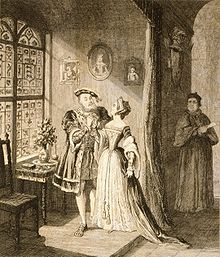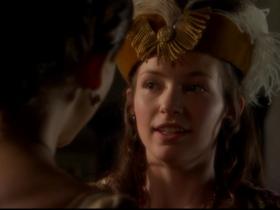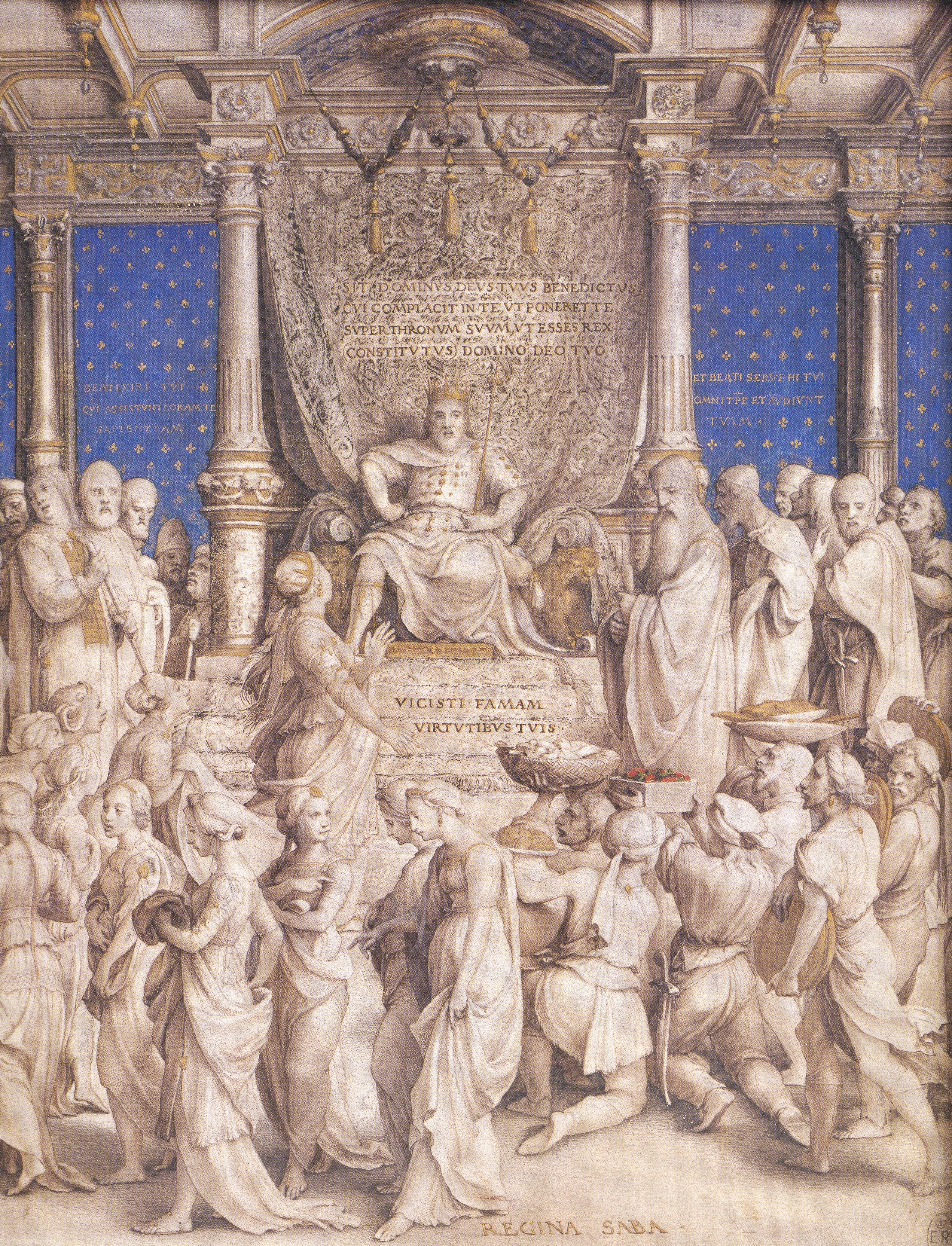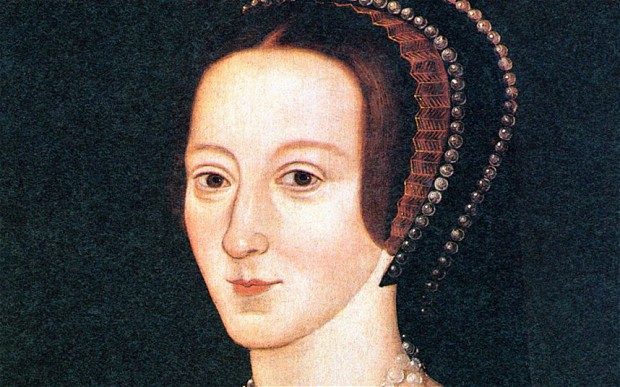
Pssst, I’m going to let you in on a secret. Anne Boleyn was Queen of England for three years! We know, you cry! But think about it, how much of our fiction shows Anne Boleyn as a queen, performing her duties or highlights any of her achievements while she held the crown? Now compare this to what usually happens; Anne marries Henry, his affection for her cools and we hasten to the miscarriage of 1536 and her subsequent downfall, glossing over her thousand day reign.
This is hardly a surprise, as the same treatment is given to all of Henry’s wives. It is their rise and fall that interests us in fiction and so their brief tenures as queen are highlighted with any marital issues that occur, rather than anything they accomplished during this time. More recently, however, fiction has started to show some flourishes into the activities of Anne Boleyn as queen, though these are by no means frequent.
So I present a brief summary of some of Anne Boleyn’s queenly activities and where they are shown by her fictional counterparts.
Anne the wife
As queen, Anne was, for the early years of her reign especially, Henry VIII’s favourite at court. Her influence then, was considerable. As such she was courted relentlessly by anyone wanting a favour from the king, hoping that Anne would advance their petitions to the king. She was, however, selective in whom she chose to help, as overuse of this influence would no doubt have seen it quickly diminished.
What can be seen as one of her greater achievements here is her securing of Henry’s illegitimate son Henry Fitzroy as the her Uncle, the Duke of Norfolk’s, ward for free. Normally courtiers would pay for wardships as an investment against the right to control the ward’s wealth and eventually marry them into their own families, thus securing that wealth. The fact that Anne secured the king’s own son as a ward for someone in her family and for free cannot be overstated enough.
In fiction, Anne’s influence is typically shown when she is his mistress, her power dissolving from the moment the ring is on her finger and the crown upon her head.
Anne the head of the family

Upon her elevation, Anne would have naturally assumed her place as head of her family and indeed the Howards, replacing the Duke of Norfolk, though his influence would have been undiminished. Historically she is shown to have executed her duties in this regard with great care. She offered relatives various positions at court, securing many places in her own household for her female relatives. She was responsible for the distribution of wardships and the arranging of marriages, all of which she did without provoking the controversy Elizabeth Woodville, the last ‘mistress’ to become queen, had done.
The Other Boleyn Girl recognises Anne’s position as head. In both the book and the BBC television adaptation Anne is shown to take her uncle’s chair during family conferences as she oversees the management of the family. However, this is mostly to cast her as the person responsible for her sister’s banishment of her sister Mary from court, which historically she would have been involved in.
Anne the patron
One of the more neglected aspects of Anne, is her position as a patroness. This is not surprising as her role in patronising the arts hardly makes for an entertaining piece of fiction, fascinating though it is.

As queen, Anne was responsible for the patronisation of artists, musicians, religious and educational institutions, charitable causes and the list goes on. Surviving letters from her reign show her to be conscientious in supporting young men through their education; paying for them to go to university, no doubt with the intention of offering them employment later on.
Anne’s patronisation of the arts could fill a book in itself. Suffice to say that it was through her influence that Hans Holbein the younger became a regular painter at her husband’s court. Holbein had been producing art for Anne for some time before Henry VIII first commissioned him for a piece. Ironically that piece was to be the formal portrait of Anne’s replacement; Jane Seymour. Anne is also thought to have patronised the artistic Hornebolte family, Lucas Hornebolte was appointed the king’s painter for life in 1534, and it has been suggested that the Horneboltes and Holbein were religious refugees, which explains Anne’s interest, artistic style notwithstanding. Anne’s taste in art is in evidence by the amount of surviving artwork she commissioned, amongst other items; Hever castle contains an assortment of Books of Hours which she owned, illustrating her own preferences. But perhaps the most obvious display is in the building work she oversaw. Even before she was queen, Anne demonstrated a love of architecture, an interest she shared with Henry. Through her intervention, York Place was remodelled to reflect her style, so much so that the extensive alterations and expansions were completed within the unlikely time frame of a year, and Henry and Anne were married there.
Anne the Reformer
Perhaps the most well known of Anne’s activities while she was queen were those of a reformist nature. Of the ten church elections during Anne’s time as queen, seven went to her choice of reformer and of course she was championed as one of the more influential reformers of the day. Eric Ives suggests that Anne’s reform was centred on the Bible, citing that she had an English Bible available for all her household to read and which she herself read from. She was enthusiastic about scriptural debate and the translation of the Bible for all Englishmen and women to read freely. Of all the filmic versions of Anne, it is The Tudors that demonstrates this aspect of Anne’s character most often. Natalie Dormer’s Anne lectures her household staff on their good conduct and encourages them throughout the series to read the Bible she has made available to them.
Anne the Mother

Most cinematic depictions of Anne show her to be a loving mother.
Possibly the most recurring element of Anne’s queenship that appears in fiction is her relationship with her daughter, Elizabeth. Historically we know that Anne was very close to Elizabeth, despite the distance that separated them. She visited her daughter frequently, with or without her husband, and in the interim periods kept up correspondence with Lady Bryan who had the care of the princess. The treasury records of the time also reveal that Anne spent a great deal of money on her daughter’s clothes, ensuring that she had a splendid wardrobe. There is a record of a single cap being sent back to the maker three times before Anne was satisfied with it enough to pass it on to her daughter. Had Anne lived, it would not be hard to imagine the two women having a very strong bond. Fictional representations tend to lean towards Anne being disappointed that Elizabeth was a girl, before reconciling herself to the situation and relishing in her daughter’s growth. Most depictions show Anne having some loving exchange with Elizabeth before her arrest or execution.
More Anne Boleyn?
The Rape of Anne Boleyn
Bibliography
The Privy Purse Expenses of King Henry VIII Ed. Nicholas Harris Nicolas (W. Pickering, 1827)
Fraser, A. The Six Wives of Henry VIII (Pheonix Press, 2002)
Ives, E. The Life and Death of Anne Boleyn (Blackwell Publishing, 2005)
Starkey, D. Six Wives: The Queens of Henry VIII (Vintage, 2004)
Weir, A. The Six Wives of Henry VIII (Pimlico, 1992)













